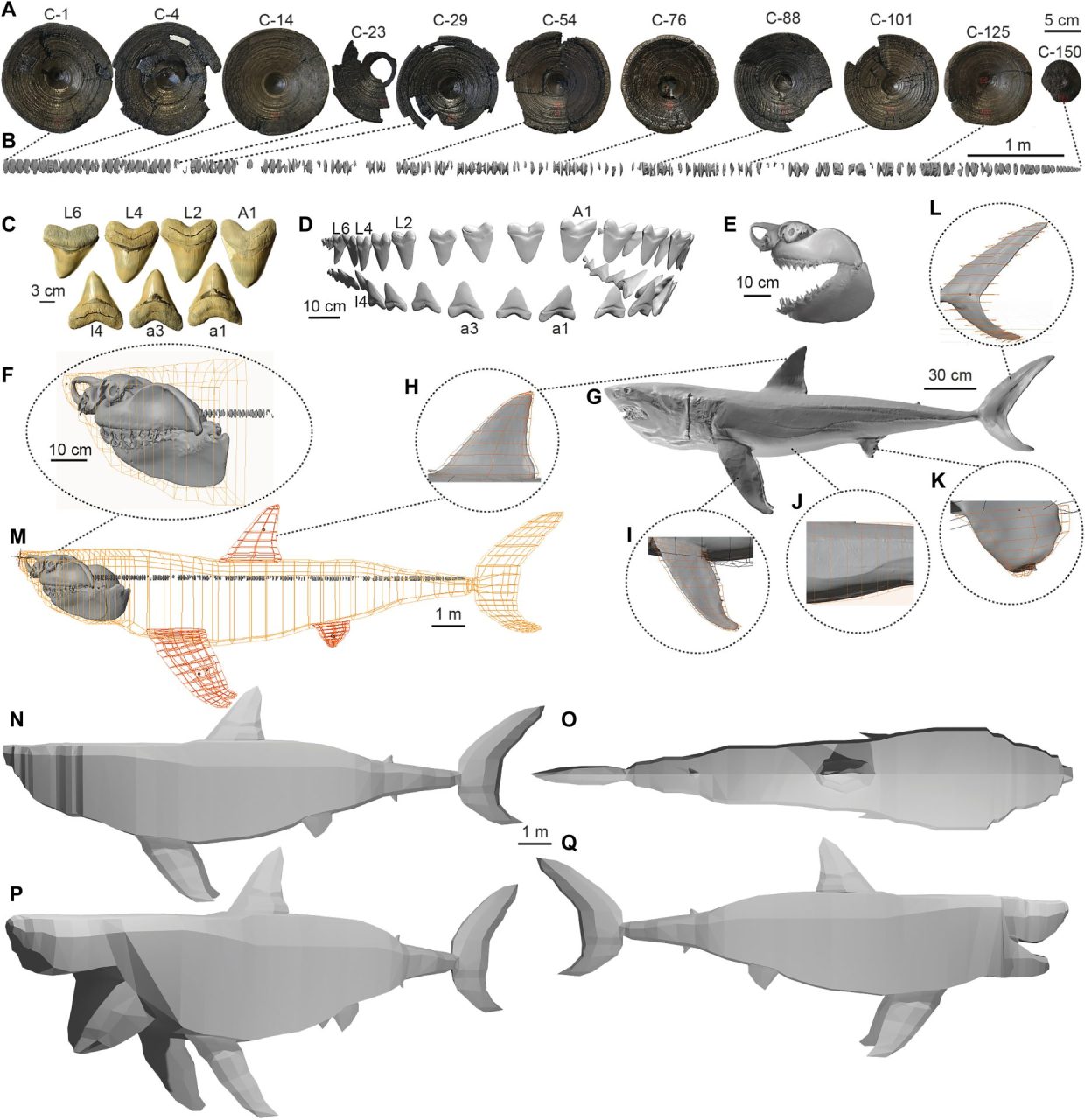Carcharocles megalodon, the largest shark that ever lived on Earth, became extinct approximately 2.6 million years ago, according to a new analysis of its fossil record carried out by Dr Christopher Clements of the University of Zurich and Catalina Pimiento of the University of Florida’s Museum of Natural History.

Carcharocles megalodon pursuing two prehistoric whales. Image credit: Karen Carr / CC BY 3.0.
Carcharocles megalodon ruled the oceans for more than 10 million years, from the middle Miocene to the Pliocene. It was a top-level predator that fed on whales and other marine mammals.
This prehistoric monster had a cartilaginous skeleton and was therefore poorly preserved with exception of its teeth, but paleontologists believe that it looked a lot like the extant great white shark, only far larger.
The largest specimens would have weighed around 100 tons and reached 20 meters in length.

Despite its popularity and widespread fossil record, remarkably little is known about the extinction of Carcharocles megalodon.
In a new study, Dr Clements and Catalina Pimiento analyzed the most recent records of this species from the literature and scientific collections and calculated the time of its extinction using a novel mathematical model called Optimal Linear Estimation (OLE).
The results show that Carcharocles megalodon went extinct around 2.6 million years ago,

“This study will not only serve as a key reference for debunking the myth that the shark still exists, but its novel methods will influence the future of scientific research of extinct animals and plants,” Dr Jorge Velez-Juarbe of the Natural History Museum of Los Angeles County, who was not involved in the study.
“The methodology that the authors used had only been previously employed to determine extinction dates in historical times, such as to estimate the extinction date of the dodo bird.”

“In this work, they applied that same methodology to determine the extinction of an organism millions of years ago, instead of hundreds. It’s a new tool that paleobiologists didn’t have, or rather had not thought of using before.”
Catalina Pimiento, who is the first author of a paper published in the journal PLoS ONE, said: “when we calculated the time of megalodon’s extinction, we noticed that the modern function and gigantic sizes of filter feeder whales became established around that time.”
“Future research will investigate if megalodon’s extinction played a part in the evolution of these new classes of whales.”
Source: sci.news







